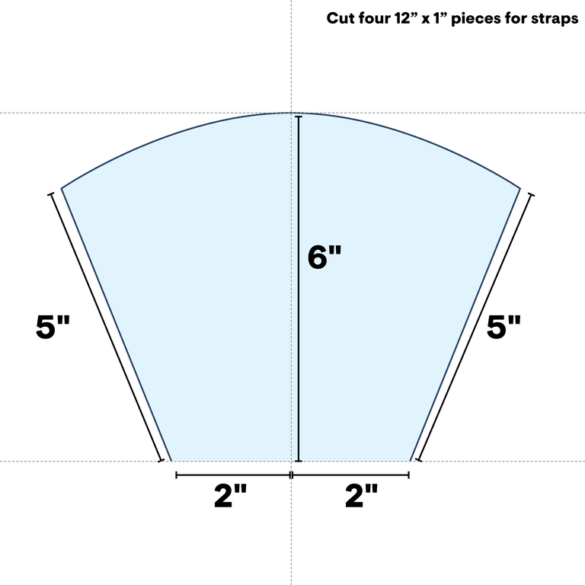
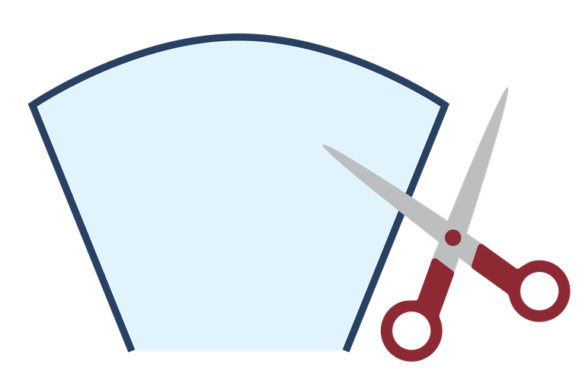
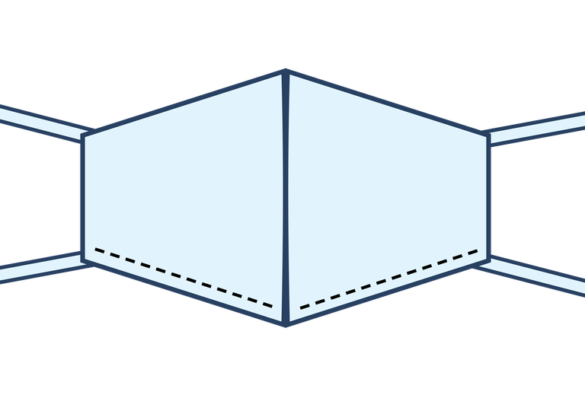
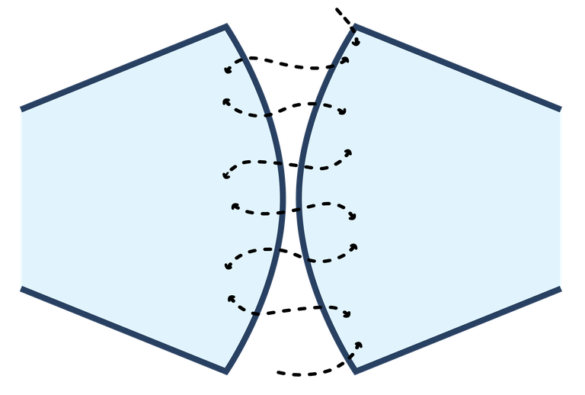
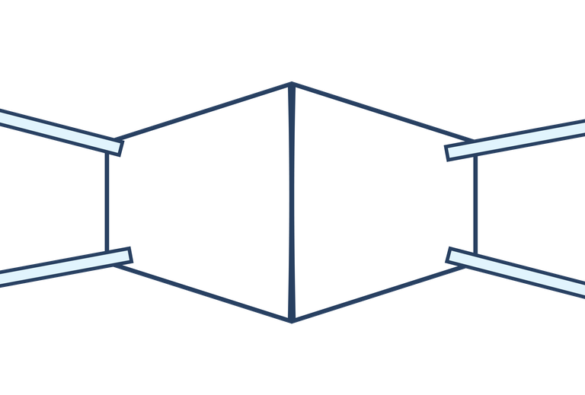
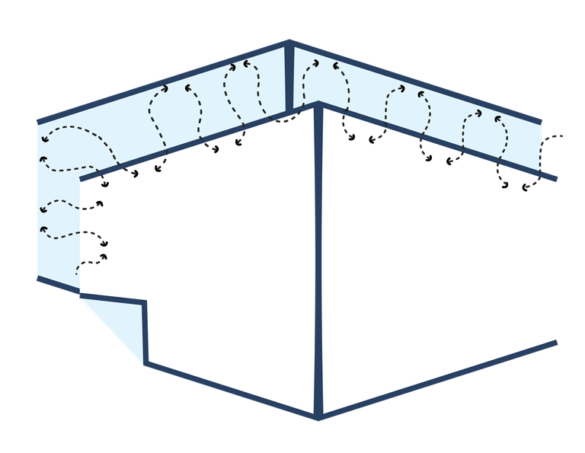
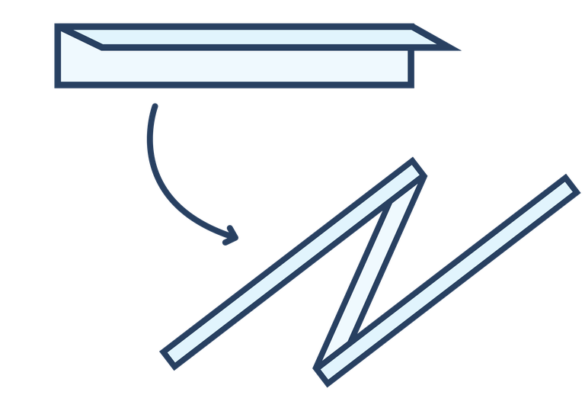

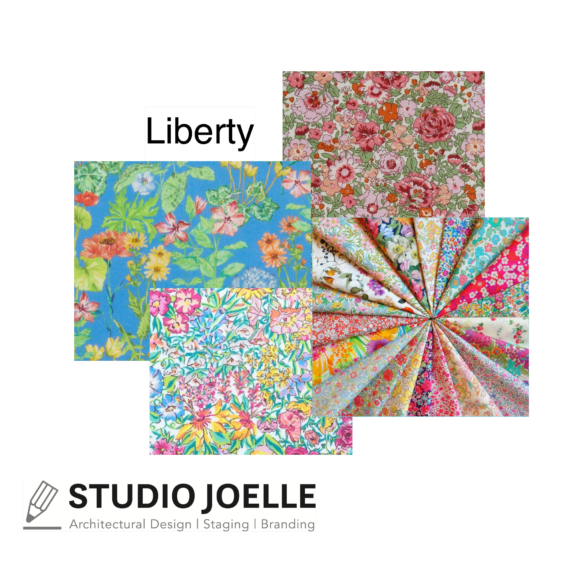



But first: Why are so many people making masks anyway?
The spread of the coronavirus—and ensuing cases of COVID-19—has decimated supplies of medical-grade masks, leaving many healthcare professionals resorting to re-wearing potentially contaminated masks several days in a row or even creating makeshift masks from T-shirts or bandanas. Additionally, due to new recommendations from the CDC, more and more civilians are wearing masks in public to prevent the spread and pickup of germs.
Do cloth masks protect against coronavirus?
No mask or shield has a 100% success rate at blocking the spread of the virus. The most effective masks are surgical-grade and N95 masks, but, given that those are in short supply, many hospitals have urged their workers to use whatever is available. Cloth face coverings are a way of “bridging the gap,” providing coverings that are not ideal but are better than nothing. The mask pattern Thibaut created features two layers of tight-knit cotton, which, while not on par with medical-grade masks, offers more protection than, say, a bandana.
Additionally, the CDC is currently recommending civilians wear cloth face coverings when in public.
What’s the best way to use the mask?
The CDC recommends that face coverings: “fit snugly but comfortably against the side of the face, be secured with ties or ear loops, include multiple layers of fabric, allow for breathing without restriction, and be able to be laundered and machine dried without damage or change to shape.” For this reason, your best bet is to use pre-shrunk fabric and/or wash and dry the masks before donation or use.
When removing the mask, you should be careful that it doesn’t touch your eyes as you take it off your face.
How do you care for a cloth mask?
Cloth masks should be laundered regularly—and you should wash your hands (for the recommended 20 seconds!) before putting on and after removing a face mask.
So how do I make my own fabric face mask?
Here’s a step-by-step tutorial from the wonderful team at Thibaut.
Supplies:
- Fabric
- Ruler or yardstick
- Scissors
- Pins
- Sewing machine (or needle and thread and some extra time!)
A diagram of the pattern Maria from Thibaut used to make her mask.
1.Measure pattern
Before you get started, you’ll need a pattern. Luckily, we got Maria from Thibaut to share her template, above, so you can use that to measure and trace onto your chosen fabric. Note that for each mask, you’ll want four of the main shape (so that the mask is double-layered) as well as four 12″ x 1″ strips to serve as mask ties, since elastic has proven difficult to come by (if you happen to have elastic at home, you can forego the straps in favor of elastic loops).
2. Cut fabric
Once you’ve traced the pattern onto your fabric, cut the pieces out using sharp scissors. Tip: It may be easier to cut one long length of 48″ x 1″ fabric for the straps, then divide it in 4 pieces later.
3. Create mask layers
Place two of your fabric pieces together, patterned-side facing in. Sew them together along the curved long side, then unfold so they create one long (now curved) piece. Repeat with two more pieces so you have two layers of face covering; these will make up the inside and outside of your mask.
4. Sew three sides of the mask
Place the two mask pieces you’ve just created on top of each other, again pattern face-in. Sew together along both short edges and one long edge, leaving the second long edge open. Turn the mask right-side out! Sew the final side.
5. Sew straps
Fold your 12″ x 1″ strips (or 48″ x 1″ single strip) over twice and feed this carefully into the sewing machine to secure it into a thin strap. Tip: Since this piece is so narrow, you’ll want to go slowly with your machine to achieve a straight line.
6. Attach straps
Once you have four 12″ straps, attach one to each corner of the mask. Tip: Make sure you’re sewing on the outside of the mask; should be the side where the pattern is visible!
7. Finish mask
Flip the mask right side out and sew down the remaining side. Voilà, you have a mask!
8. Donate to your nearest healthcare center!
Stacy Senior Allan, marketing director at Thibaut, suggests including a note, which Thibaut is doing with each mask it donates. “When you’re giving to a hospital, it’s nice to put a little note in there to show your appreciation to the people on the front lines,” she says. “When I do the drop-offs, these people say how great it is to know that people on the outside are thinking of them. It’s practical but it’s also something special.”
Can’t find a local place to donate your masks? Ship your masks to Stitchroom, which is facilitating donations.
Scalamandre + Starck +Mask Club
Design enthusiasts love Stark and Scalamandré’s iconic prints on sofas and wallpapers—and now there’s another innovative use for those patterns. A new direct-to-consumer face mask company is offering some of the brand’s most famous motifs as masks through a partnership with the two brands (which merged in 2017).
MaskClub, founded this month by Trevor George, is now selling masks in the brand’s instantly-recognizable Zebra or Tigre patterns as well as the floral Jardin de Chine or Bahar motifs. And for every mask you buy, MaskClub will donate a medical-grade mask to a first responder through the First Responders Children’s Foundation. Even better: On purchases of masks made with Stark or Scalamandré fabric, 100% of net proceeds will be donated to the Kips Bay Boys & Girls Club, the Bronx community center that is usually the benefactor of the famous New York designer showhouse that was forced to postpone this year.
While recently trying on a mask at home, George realized his son was frightened to see his father wearing one—so he decided to create masks with a more cheerful look. In addition to the Stark and Scalamandré partnership, MaskClub offers patterns from over 2,000 licensees geared towards both adults and children, including Hello Kitty, NASA, Betty Boop, Popeye, and Care Bears (Scalamandré and Stark are the only ones to offer the Kips Bay donation).
“These are confusing times,” says George. “We want to help families make the situation a little better, and hopefully brighter, by featuring beloved brands that resonate with children and making the act of mask wearing less intimidating. By outfitting the whole household, children will hopefully find the act of mask wearing less scary when seeing their parents wear it.” The company offers both a subscription-based model, where you can receive a new mask every month for $9.99, in addition to à la carte pricing in which masks cost $13.99 each. Both options incorporate the buy-one-give-one model.
By Hadley kelley for House Beautiful
